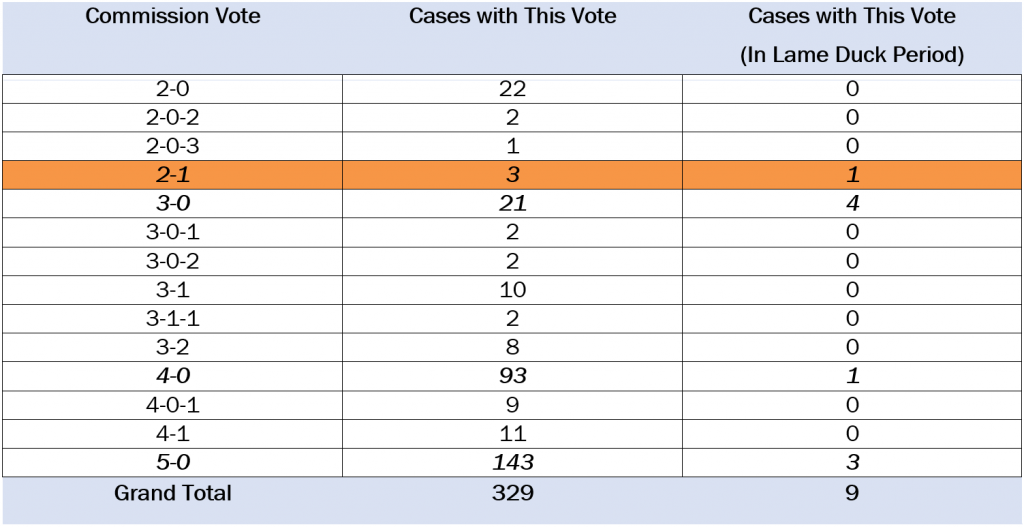
By Matthew Spitzer (Northwestern University)1
The District Court’s opinion finding Qualcomm guilty of antitrust violations in a case brought by the Federal Trade Commission2 is on appeal to the Ninth Circuit. This post will show that the circumstances under which the FTC chose to bring this case should lead everyone, including the Court of Appeals, to view this case with skepticism.
The Federal Trade Commission’s case against Qualcomm for allegedly violating Section 2 of the Sherman Act (monopolization) was initiated in a most unusual and troubling fashion.
- The FTC is supposed to have five members. However, at the time the FTC voted to bring the case, there were only three sitting members. Gridlock between the President and the Senate had prevented filling the vacancies.
- The vote to bring the case was 2 to 1, along party lines.3
- There was a written dissent by Commissioner Maureen Ohlhausen from the decision to bring the case.
- One of the two Commissioners who voted to bring the case (Chairperson Edith Ramirez) announced her resignation on January 13, four days before the vote to bring the case.4
- The vote was taken on January 17, 2017, three days before the inauguration of a new President, during the “lame duck” period. The new President represented a change of the party in power.
How disquietingly unusual was this procedural setting? Very unusual and very disquieting, as it turns out.
To examine this question, I5 scraped the FTC’s website to gather all of the votes on bringing, settling, or taking court action in antitrust monopolization actions (excluding Hart-Scott-Rodino filings) since 1994.6 There have been 329 such actions, and the votes are summarized in the table below. The numbers in the first row indicate votes for, votes against, and recusals. Thus, 4-0 indicates four votes for, zero against, and no recusals. And 4-0-1 indicates four votes for, zero against, and one recusal. Thus, the 4-0 vote also indicates that the FTC had only four members, while the 4-0-1 vote shows that the FTC was at full strength. Any row with a “lame duck” period vote is shown in bold and italics. The category into which the FTC’s decision to bring an action against Qualcomm falls (2-1) is highlighted.
The columns may need a bit of explanation. The first column shows the outcome of the vote in all the cases since 1994 detailed in that row. The second column shows the total number of cases since 1994 that had that vote. And the third column shows the total number of cases since 1994 that had that vote and that were brought in the lame duck period. Thus, the entries in the third column are also represented in the second column.
The first thing to note is that only 3 of the 329 cases were brought by a 2-1 vote. That is less than 1%. And the only one of those to be brought during the lame duck period was FTC v. Qualcomm. Second, if we add in the 3-2 votes, the only others where there is a one-vote margin, we get 11, or about 3%. Why focus on these? They are the cases where the wisdom of bringing the case is most suspect. A multimember expert body, such as the FTC, is supposed to apply its wisdom to the decision to bring a case. Where the decision is brought on a razor thin vote, the wisdom is also razor thin. Not surprisingly, only 3% of the cases brought are in this category.
To turn this around, the typical way to bring a case is by unanimous vote. This is, by definition, where all Commissioners agree. If we sum the 5-0, 4-0, and 4-0-1, 3-0, 3-0-1, and 3-0-2 (all of the unanimous votes with at least 3 votes in favor) we get 270 of the 329 cases, or 82%. If we throw in the 27 cases with 2-0, 2-0-2, and 2-0-3, we have 297 of the 329 cases, or 90%. Thus, 90% of the cases are unanimous. These are the cases where our belief is that the case is strongest. And the 4-1 and 3-1 cases lie in between the unanimous cases and the “razor thin margin” cases in terms of likely strength of case.
What about cases brought in the “lame duck” period – between the date of the election of a new President from a different party and the inauguration?7 These are cases where we should be most suspicious that the case is politically motivated. After all, if there were no political motivation for the case, the Commissioners would just put the case on the back burner for a few weeks and allow the new President’s appointees to make the decision about whether to bring the case. There are only nine votes in the lame duck period in the data set, and only one of these had a dissenting vote – FTC v Qualcomm.

Thus, the vote to bring FTC v Qualcomm provides the least wisdom and confidence of any vote to bring any FTC antitrust case since 1994. The vote, 2-1, was the least likely to signal a meritorious case in the data set, while bringing it in the lame duck period suggests political considerations produced it.
So, what are the implications of all of this? Everyone – courts, journalists, law professors, techies, and the general public – should view this case with a great deal of skepticism. Or, to put the same point differently, there should be a very high burden of proof on the FTC.
What happened after the vote to bring the case? On November 6, 2018, Judge Koh handed down an opinion8 finding that Qualcomm violated Section 2 of the Sherman Act and ordered far-reaching remedies. These remedies are so broad that they threaten to disrupt the worldwide modem chip business. The remedies have now been stayed by the Ninth Circuit Court of Appeals.9 While staying the remedies the court stated that “Qualcomm has shown, at minimum, the presence of serious questions on the merits.”10 The case is now before the Ninth Circuit. I am not surprised that there are serious questions on the merits. The circumstances of bringing this case in the first place virtually guaranteed that there would be questions. One can only hope that the Ninth Circuit will take a very close look at this case, and that the FTC will refrain from bringing any more cases under similar circumstances.
Click here for a PDF version of the article
1 I am Director of the Northwestern University Center on Law, Business, and Economics. Before that I was the Director of Northwestern’s Searle Center on Law, Regulation, and Economic Growth. The Searle Center received its largest gift (by far) from the late Dan Searle. It also received very major funding from Qualcomm, and smaller (but still very significant) funding from Microsoft, Google, the USPTO, Intellectual Ventures, and many others. For a full list, please visit http://www.law.northwestern.edu/research-faculty/clbe/documents/searle_center_support.pdf.
2 Federal Trade Commission v. Qualcomm Inc., 2018 WL 5848999, Nov. 6, 2018, N.D. Cal.
3 The FTC, after getting a full contingent of Commissioners, reconsidered the wisdom of bringing the case. The FTC split 2 to 2, with the Chairperson recusing himself because Chair’s former law firm had represented Qualcomm.
4 How often is the deciding vote in favor of bringing the case cast by a Commissioner who had already announced her resignation? That turned out to be more difficult to chase down than the other aspects of this. I am still working on it.
5 To be more accurate, my research assistant, Adam Gilmore, did the scraping.
6 A more complete description can be found at http://bit.ly/ftc_search_description.
7 In our data set those would be Bill Clinton to George W. Bush; Bush to Obama; and Obama to Trump.
8 Federal Trade Commission v. Qualcomm Inc., 2018 WL 5848999, Nov. 6, 2018, N.D. Cal.
9 FTC v. Qualcomm Inc, 935 F.3d 752, Aug 23, 2019 (9th Cir.)
10 Id. at 756.
